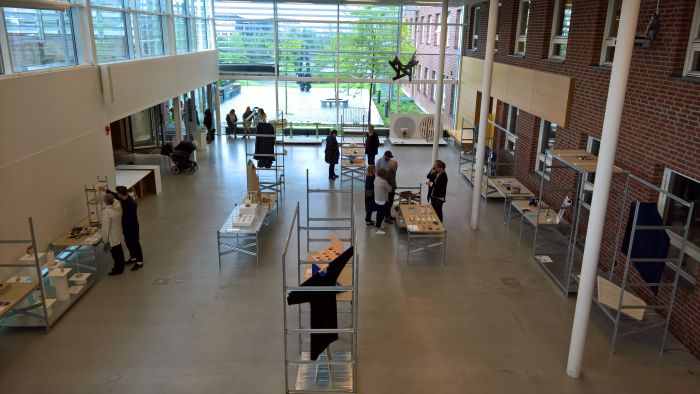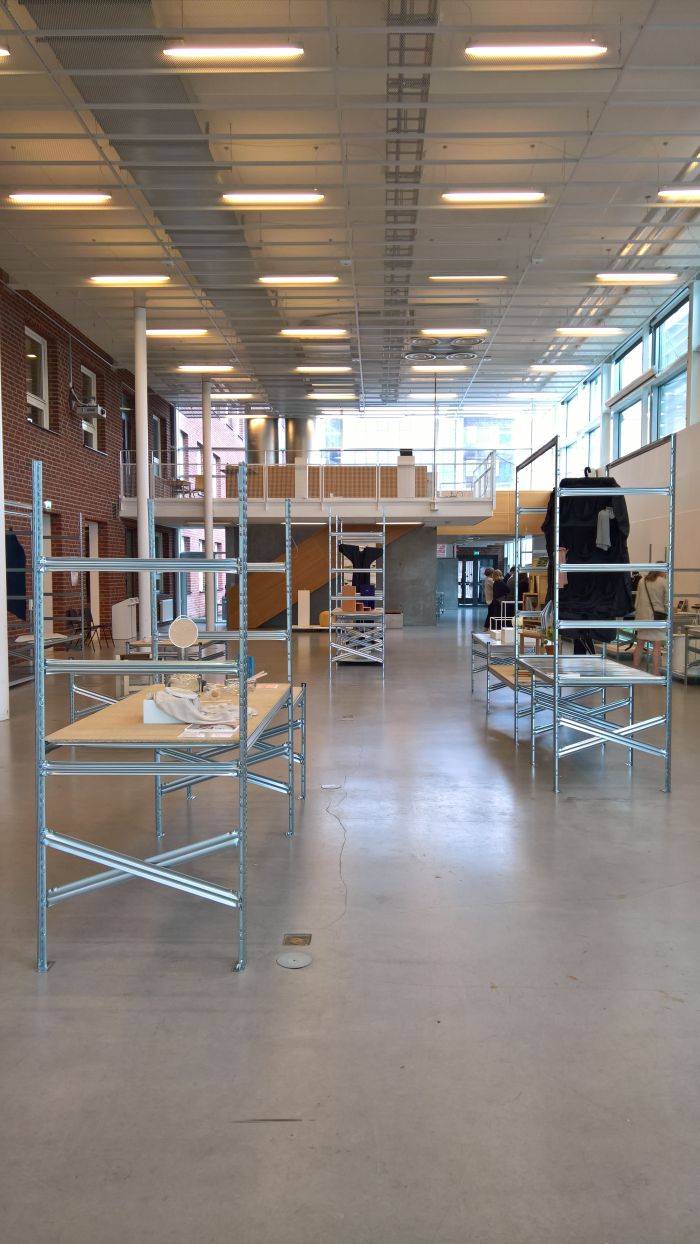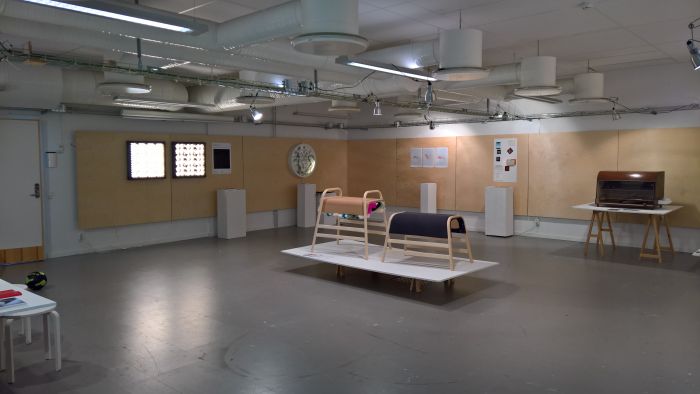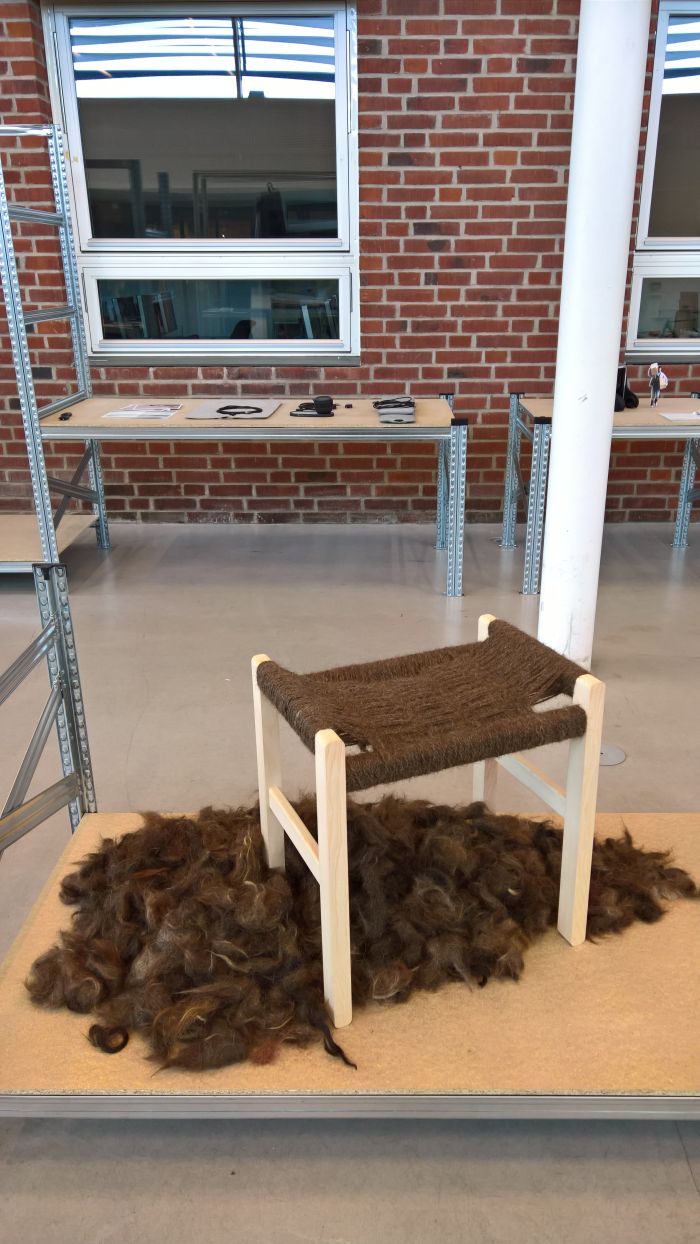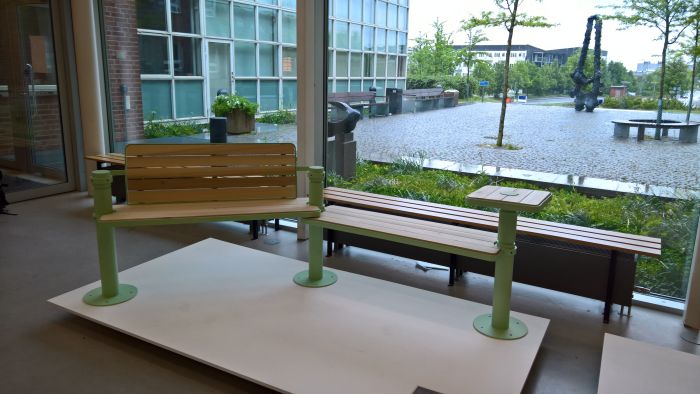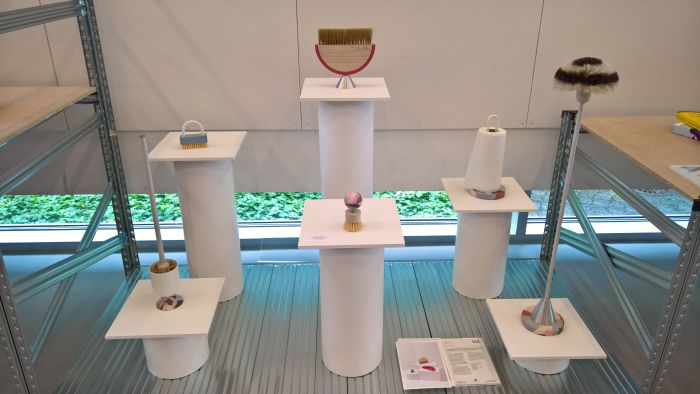#campustour 2017: Lund University School of Industrial Design, Sweden
The Swedish town of Lund is famous as the birthplace of the Tetra Pak packaging system, and thus of a global revolution in food and drink distribution systems and consumption patterns.
If the new crop of Lund University School of Industrial Design graduation projects reached conclusions as simple, logical and resource efficient, if arguably, and ideally, without the associated post-use recycling problems, could be assessed at the institution’s 2017 Degree Exhibition.
Lund University School of Industrial Design
Founded in 1666 Lund University is one of Scandinavia’s oldest seats of learning: Lund University School of Industrial Design, in comparison, is barely a toddler.
Established in 1995 as a programme of study within the Faculty of Engineering, Lund University initially offered a five year Master of Industrial Design programme, before reforms in 2007 saw the course split into a three year Bachelor and a two year Master. In 2009 the “programme” of Industrial Design became Lund University School of Industrial Design, an institution housed within the Department of Design Sciences, and which in addition to its Bachelor and Master programmes features an industrial design research department and a PhD programme.
An important, when not the key, protagonist in the development of the Lund School of Industrial Design has been Sweden’s global furniture brand: in 1999 the IKEA Foundation provided financial support which allowed for both an increase in the number of students and the construction of an independent Department of Design Sciences building on the Lund campus, the Ingvar Kamprad Designcentrum,
Links between the school and IKEA remain close and several of the projects on show at the 2017 Graduation exhibition were sponsored by the company; and not just them, many of the 2017 graduation projects being the result of cooperations with both companies and other, civil, NGO, partners. In itself no bad thing, as long as on the one hand the students maintain authorship of their work, and on the other the nature of the cooperation doesn’t unduly constrain the student’s in realising their understanding of design.
Lund University School of Industrial Design Degree Exhibition 2017
By way of painting the scene. The day we visited Lund it was raining. As in biblical. As the bus rolled the 20 kilometres from Malmö to Lund, we witnessed arcs being built, animals waiting patiently in pairs, sandwiches being spread. We arrived soaked. To find the doors locked. And a sign in Swedish. On the verge of a very watery breakdown, a very wet Swedish lady arrived who informed us the sign said we were to use the side entrance. She’d been round the building once and couldn’t find it. Maybe together we’d have more success. And so off we set on our investigation. Not quite Wallander we’ll grant you. But certainly noir.
And an excellent example of the risks inherent in the apparently risk-free joy of visiting a student exhibition…. the number of times we’ve stood in front of locked doors, been irritated to the point of giving up by signage and maps, failed to find exhibition rooms. And even on occasion exhibition buildings. Sometimes our fault, sometimes not, we’ve long accepted that a day out a student exhibition will rarely proceed as planned. Which obviously adds to the tension of us undertaking a European tour of student exhibitions.
But through our joint efforts we found the fabled side door!
And the exhibition.
Presenting a mix of Bachelor and Master graduation projects across a range of genres, the 2017 Lund University School of Industrial Design Degree Exhibition may, in our opinion, have included nothing which will prove to be quite as revolutionary as Tetra Pak, was however a very healthy, and pleasing, mix of the theoretical, conceptual and the practical, functional; of projects which applied design processes and thinking in a wide range of contemporary settings and contexts. And with, inevitably, varying degrees of success and elegance.
Whereby, and as we will never tire of repeating, with student projects it is rarely, never, what results that is important, but rather how the student achieved that result, how they responded to a brief, solved the problem at hand, their thinking, the evolution of that thinking and the way they developed the project.
A situation ably demonstrated in Lund by projects such as, and amongst many others, the concept vacuum cleaner Suck it Up by Isak Folenius, Beyond Local by Anna Gudmundsdottir which explores local production of household goods and the Microbite “biting pouch” by Jan-Micha Gamer, a project we hope was meant provocatively, fear wasn’t. Hope and fear which mean we plan to return to it at a later date.
Four projects in particular caught our attention…….
Humanium Lantern by Erik Arnell
The majority of social design projects deal with finding alternatives for those who have apparently none, whereby they largely offer solutions to problems, rather than necessarily tackling the problem. Generally because the problem is too complex to be tackled by a design project alone. Humanium Lantern by Erik Arnell both tackles the problem and offers a solution.
Launched in June 2016 by the Swedish NGO, IM Swedish Development Partner, Humanium is produced from metal salvaged from confiscated illegal weapons, and thus represents a truly meaningful form of re-cycling. Available commercially to anyone interested in working with it, the initial harvest of Humanium was won in El Salvador, and in context of his Masters thesis Erik Arnell developed a family of Humanium candle holders to be sold in fair trade shops in Sweden, the profits flowing back into the project.
An elegant, and very symbolic, project as it, a candle holder, on its own, is unlikely to solve El Salvador’s gun problems; however, beyond the candle holder Erik has created the basics of a production, distribution and sales process which allows for him, or other designers, to create further products to be sold in Sweden, or other countries, and thus not only generate direct income for the project, but increase understanding and awareness of the project, the possibilities of the material and thus, hopefully, commercial demand for raw Humanium. Every kilo sold meaning as it does fewer guns on the streets. And despite what the NRA try to convince us, guns do kill people. Honest!
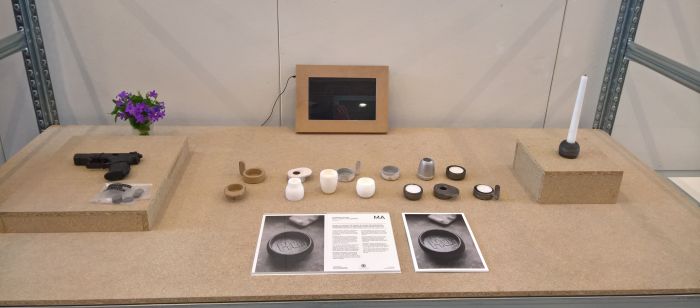
Humanium Lantern by Erik Arnell, as seen at Lund University School of Industrial Design Degree Exhibition 2017
Norra Hamnen – Courtyard Kitchen Sofa by Odin Brange Sollie
Created in collaboration with the Swedish outdoor furniture and utensils manufacturer Nola, Norra Hamnen by Odin Brange Sollie arose from a desire to develop furniture objects which encourage social contact in shared communal yards and other contemporary urban spaces.
A neatly proportioned and defined object, the apparent privacy of the construction with its high wings juxtaposed to the openness of the structure creates the necessary formal tension while, and according to Odin, the choice of a rusty red colour akin to the famous Swedish Faluröd roots the object in the native tradition from which it originates. Unnecessarily. We’d add. For us the object is confident enough on its own to carry any hue.
And indeed if it is to be used in public spaces it is arguably preferential if it is used to bring a bit of colour, as well as comfort, to the contemporary courtyards of Europe. Or Indeed contemporary interiors, for we can well imagine Norra Hamnen working just as proficiently indoors as we are certain it will out.
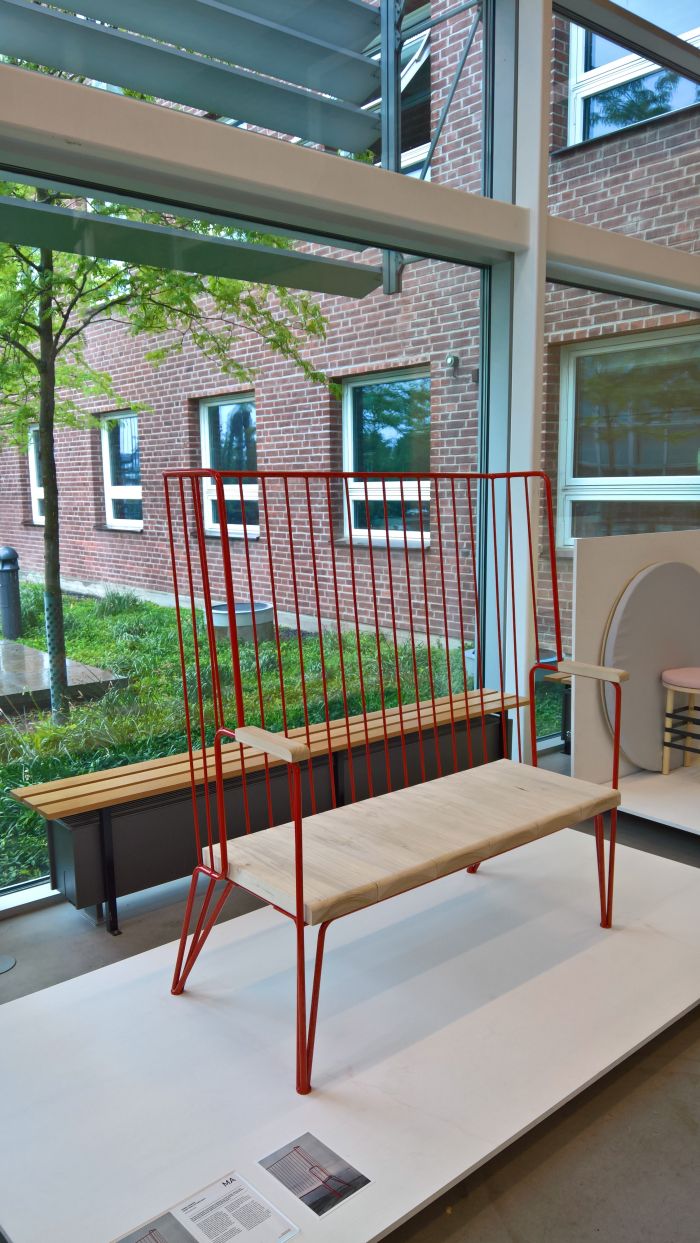
Norra Hamnen – Courtyard Kitchen Sofa by Odin Brange Sollie, as seen at Lund University School of Industrial Design Degree Exhibition 2017
Goool by Johan Bohman
As anyone familiar with the philosophy of Ron Manager will be well aware, all you need for a game of football is some chums, a ball and “jumpers for goalposts”. The app Goool by Johan Bohman keeps the jumpers, or indeed any other objects – we used to use school exercise books, seemed the better use for them – and creates from them a virtual set of goalposts and crossbar: the user defines the dimensions in the app, the phone’s camera monitors the virtual space, and whistles and bells announce the ball hitting the back of the net. According to Johan Goool means “an end to the constant discussion – goal or no goal?”
Which is of course the whole point of jumpers for goalposts. Arguing over where the crossbar is, if the ball went in or out after “hitting” the “post”, if it even did “hit” the “post”, arguments which change form and context as you grow: the arguments you have aged ten being different from those aged thirty. The Battle of Waterloo may or may not have been won on the playing fields of Eton, but what is certain is not only that team sports can help children prepare for adulthood, but that throughout our lives informal experiences are just as important for our personal development as formal ones. It’s bad enough that the football authorities want to introduce video replays to avoid “mistakes” in professional football; we don’t need to sanitise jumpers for goalposts.
Which isn’t to say the technology developed in context of the app isn’t without its uses, it is, and we can imagine several training situations in which the ability to define a virtual “target” would be of great value. But leave us our kickabouts in the park……..
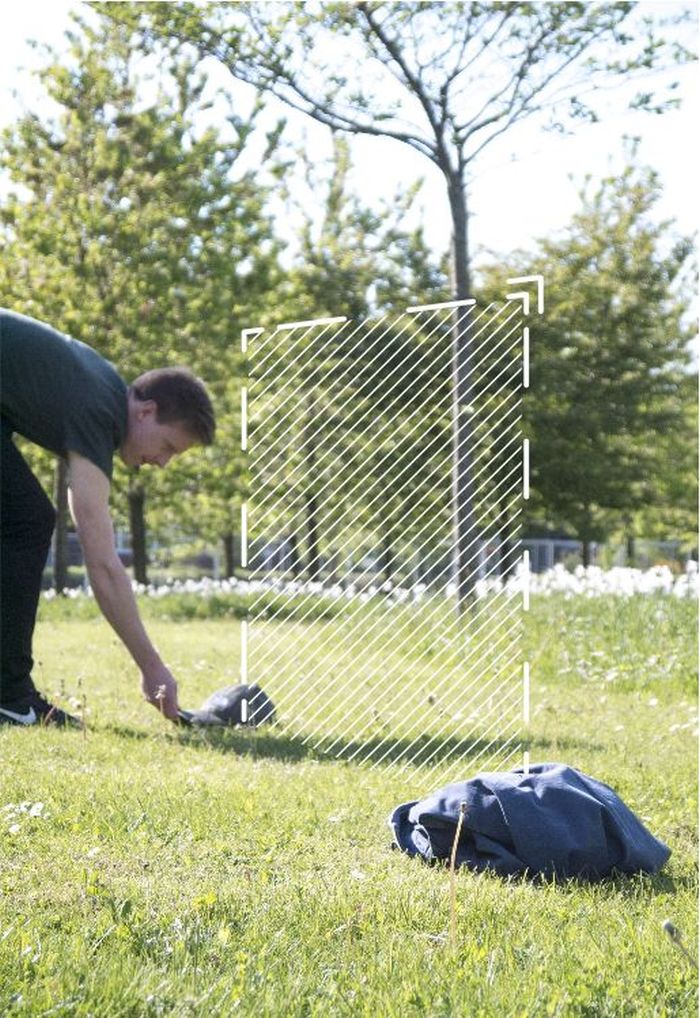
Goool by Johan Bohman, as seen at Lund University School of Industrial Design Degree Exhibition 2017
Sundrop by Erin Karlsson
We’re not sure if one can, or should, speak of a gentrification of development. And so we’ll skirt round it.
Shortly before leaving for Lund we were at the festival state of Design Berlin, where the “How sustainable was my sustainability” presentation included the Watercone project by Stephan Augustin. Designed for areas defined by brackish water, Watercone uses the principle of evaporation and distillation to transform brackish into potable water, and is one of several such low-tech, low-cost, projects for areas deficient in guaranteed reserves of drinking water we have seen over the years. And one which found no backer. Despite being in the permanent collection of the MoMA New York.
Sundrop by Erin Karlsson operates on a similar principle to Watercone, but is intended for sailors and other seafarers. According to Erin Sundrop is able to produce up to 1 litre of drinking water per day and so while neither sensible nor practical for daily water supply, could play an important role as a safety device. Presented in an appropriately, and very neatly formed, nautical guise, a form which supports its functionality, Sundrop in addition features a cleverly integrated bottle to collect and store your newly won water, and all-in-all is a very nice piece of well considered product design.
Our wish would be that, and very much along the lines of the Little Sun project by Olafur Eliasson, should a manufacturer take up interest in Sundrop, possibilities be explored of developing it as both a commercial and social project. The problems of fishermen and sailors adrift on the oceans being as they are very similar to those millions who have but limited access to fresh water.
Full details on Lund University School of Industrial Design can be found at www.industrialdesign.lth.se, and information on all the 2017 Bachelor and Master graduation projects can be found at Lund Exhibition -17
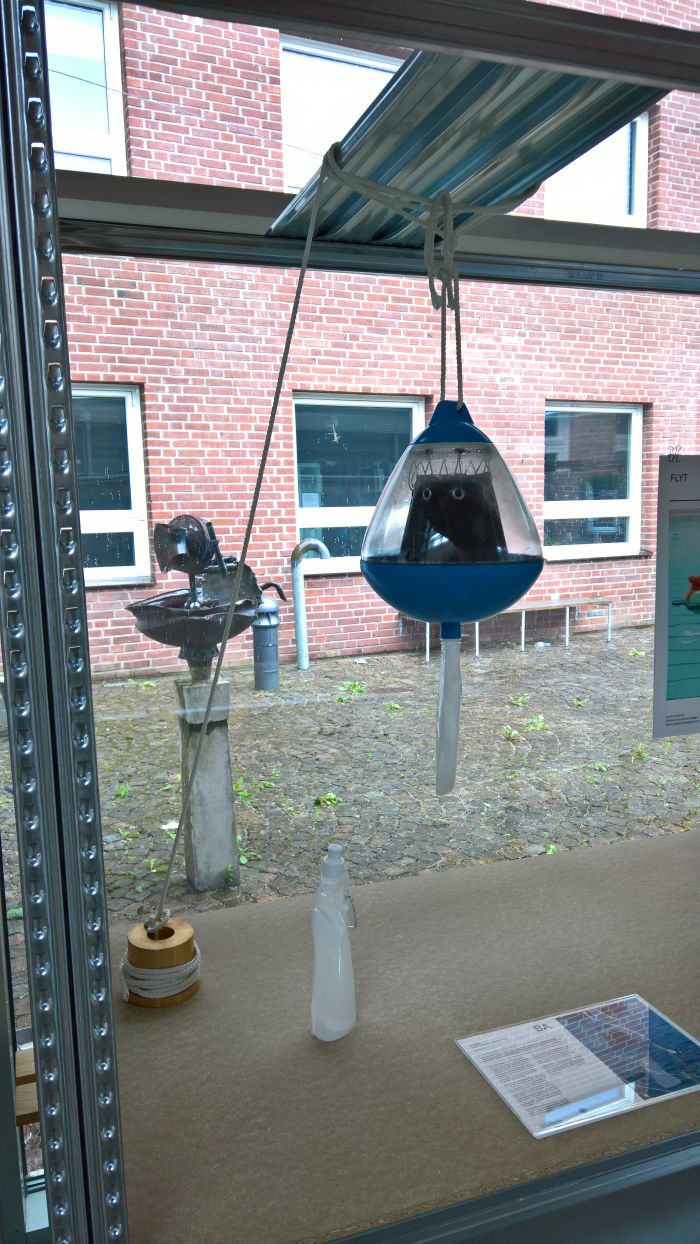
Sundrop by Erin Karlsson, as seen at Lund University School of Industrial Design Degree Exhibition 2017
Tagged with: #campustour, Lund, Lund University School of Industrial Design, Sweden
